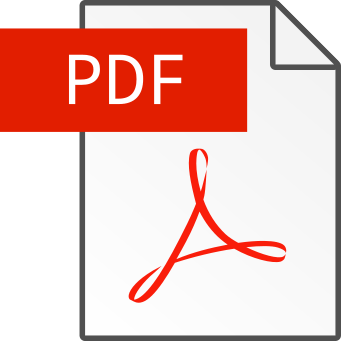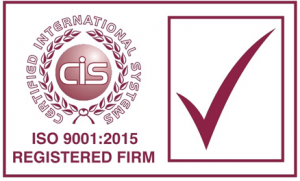Washbay Combi – silt trap and interceptor
Our combination washbay interceptors provide both 2 stages of settlement within the interceptor as well as a galvanised silt trap grating and sump. This means only one item has to be purchased instead of both a silt trap and an interceptor. The combi interceptor then connects to a mains foul drain.
Water from a washbay typically falls to the centre where the hinged galvanised grating is placed and this has a surface area of 2m x 1m which provides a large drainage area.
Water then enters the interceptor and both compartments are housed together which also reduces installation and civil costs.
The galvanised grating is also built to D400 standards for washbays where heavy traffic or HGV’s may pass over the wash bay available capacities of up to 6000 Ltrs as a standard and up to 20,000 Ltrs as a special build providing flexibility and design for most applicantions.
The additional access chamber is conveniently located under a standard 600mm cover and lid (not included).
Due to the weights involved covers and lids are expensive to transport and often cost more to ship than they are worth so we advise you source your own. You can purchase covers and lids from most builders merchants and below is a guide to assist you choosing the best type for the duty.
PDF Downloads
Combined Silt Trap and Interceptor for Washbays
Click the PDF icon to view information about our Combi Washbay.
(162Kb)
Please note: This item requires frames and manhole covers
The above requires manhole cover(s) and lid(s) (not included). Due to the weights involved covers and lids are expensive to transport and often cost more to ship than they are worth so we advise you source your own. You can purchase covers and lids from most builders merchants and below is a guide to assist you choosing the best type for the duty.
| Type | Size (mm) | Duty | European Standard | Loading | Typical Overground |
|---|---|---|---|---|---|
| Class A15 | 600 x 450 | Light | BS EN 124 | 3 tonne (approx) | Cars/Small Vans |
| Class B125 | Medium | 17 tonne (approx) | Cars/Small Commercial | ||
| Class D400 | Heavy | 38 tonne (approx) | Large Commercials/HGV |
The EA and SEPA Pollution Prevention Guidelines (PPG) which are jointly produced by the Environment Agency for England and Wales, the Scottish Environment Protection Agency, and the Environment and Heritage Service for Northern Ireland (Ref PPG3 / PPG13 / PPG4 / PPG 14) suggest that Class 2 wash bay silt traps and interceptors should be connected only to a mains foul drain, and Class 1 separators to surface drain.
The above assumes you have the consent to connect any outflow to a suitable drain as per the appropriate PPG Guideline. While we always endeavour to provide best advice and accurate information, it the responsibility of the client and/or landowner to comply with the law. Following any guideline doesn’t remove your responsibility to comply with the law and prevent pollution from your activities. Causing or allowing pollution is a criminal offence; compliance with any guidance isn’t a defence. You should make sure that the references to other sources of guidance are still current.
Extract from the Pollution Prevention Guidelines: PPG13
3. Requirements for all vehicle washing and cleaning activities
Activities that produce run-off from the vehicle onto the ground and use cleaning and valeting products should be carried out in areas that are clearly marked and isolated from surface water drainage systems, unmade ground and porous surfaces. These areas are called designated washing bays.
A designated washing bay should be designed so that run-off is:
- isolated using channels, gullies, gradient (fall on the surface) and kerbs
- directed to a silt trap or settlement tank to remove larger particles of silt and sediment
- either collected in a sealed system for reuse, discharged to the public foul sewer with prior permission
- of the local sewer provider or collected in a sealed system for authorised disposal
You should also:
- have procedures for everyone, including contractors, that cover where and how vehicle washing and cleaning should be carried out and what to do in a spillage emergency
- provide notices for designated washing bays saying what they’re for and that washing and cleaning should only be carried out in the bay
- consider whether a fence or barrier is required to prevent spray or wind drift out of the designated area
- have procedures and equipment which minimises water use and solid waste production
Extract from the Pollution Prevention Guidelines: PPG3
Closure devices and alarms
Closure devices
If too much oil is allowed to accumulate inside a separator, it will not work effectively and oil will escape. To avoid this, full retention separators must be provided with an automatic closure device that will prevent flow passing through the separator when the quantity of oil in the separator exceeds the oil storage volume (V).
Also, during emptying or maintenance the separator should be isolated to prevent the escape of waste oil. Open all isolation valves when the operation is complete.
Do not fit automatic closure devices to bypass separators unless they have been designed specifically to operate on such separators.
If the automatic closure device is activated the operator should be alerted by a high level alarm so that immediate maintenance can be carried out.
Automatic Warning Devices/Alarm systems
Separators must be provided with a robust device to provide visual and audible warning (if necessary to a remotely located supervisory point) when the level of oil reaches 90 per cent of the oil storage volume (V) under static liquid level conditions. This automatic warning device indicates that the separator is in need of immediate emptying for it to continue to work effectively.
Also, as the build up of silt will prevent the separator from working effectively, we recommend that you install a silt level alarm or another suitable device in your separator to alert you to the build-up of excessive levels of silt. In many cases, oil and silt alarms can be fitted to an existing separator. Silt alarms are most useful on those sites where high volumes of silt are likely to enter the separator, such as quarries, builder’s yards and major trunk roads.
Further equipment can be fitted to the separator, alongside a closure device and warning device, to alert the site operator to the routine maintenance requirements of the separator. This equipment might, for example, indicate when the next inspection is due and such ‘separator management systems’ will ensure that the separator continues to receive the appropriate level of attention.
Any electrical device used within a separator or used to monitor sensors placed within a separator must be intrinsically safe and certified to a suitable explosion protection standard. The location of the monitoring device, such as the alarm or ‘separator management system’ control panel, must be located within a safe area and conform to the requirements of BS EN 60079-10. For this reason it is important to always use qualified technicians who are familiar with the installation, calibration and servicing of intrinsically safe equipment. Regular maintenance and testing of equipment is essential.
Click below to view our full product guide. (opens in a new window)
Morclean’s quality administration systems have been assured and approved to the standards and guidelines of BS EN ISO 9000:2015 for the sales, service and hire of industrial cleaning equipment.
Our registration no. is 94/121120 and our standards and guidelines are externally audited by CIS.
- Please note that many models described on this website are bespoke, and as such cannot always be accurately depicted.
- All photographs and illustrations displayed on this website are representative of model ranges or a model series only. Individual models and specifications may vary from those shown.
- Please contact us if you require clarification or individual specifications of any equipment. Morclean reserve the right to update and amend the specification of our equipment and accessories without notice and in the interest of the customer.
- Images or specifications must not be reproduced with express written consent from Morclean Ltd.
- Any prices quoted are subject to VAT @ SR. E &OE





